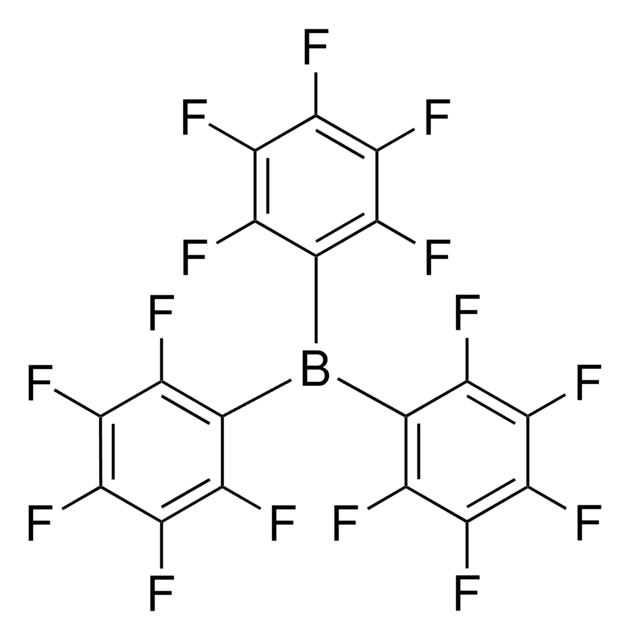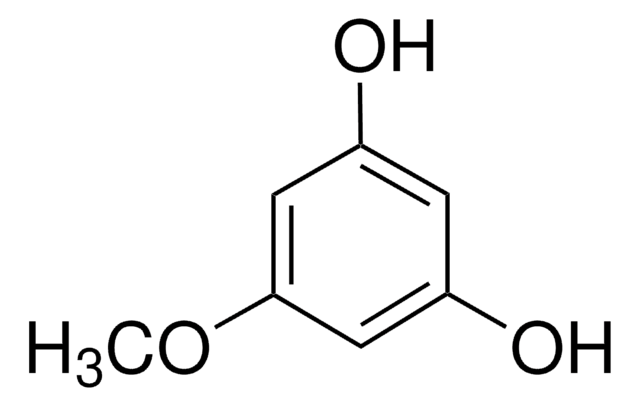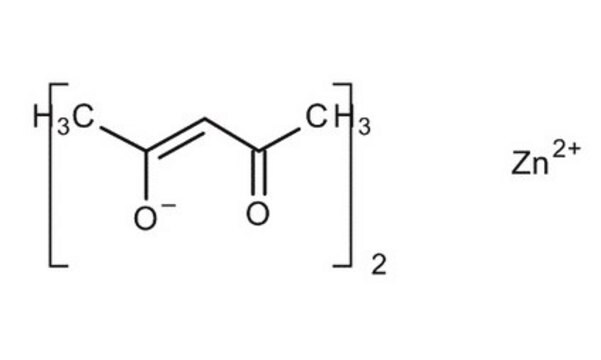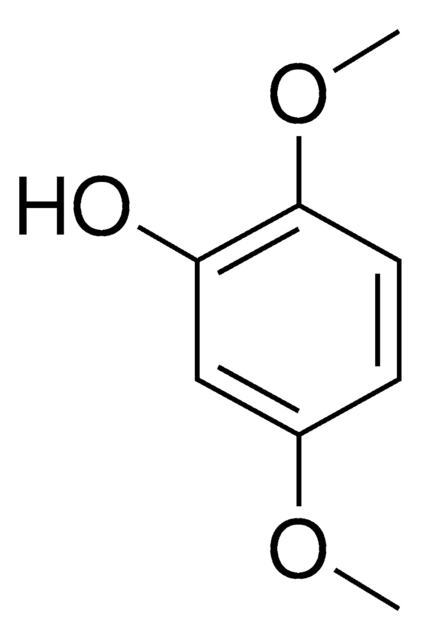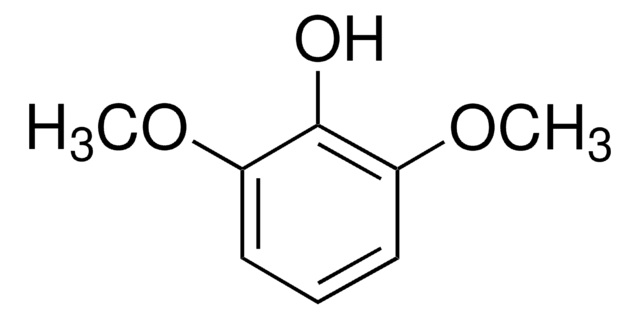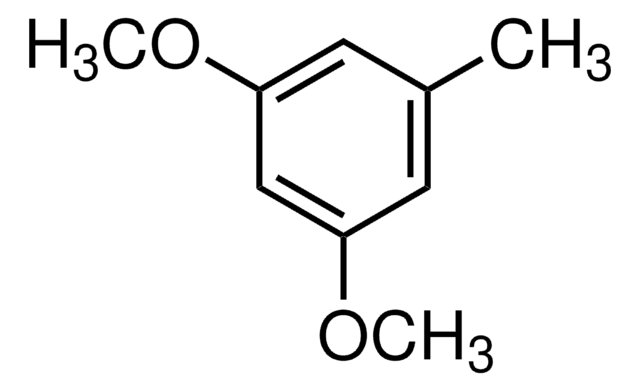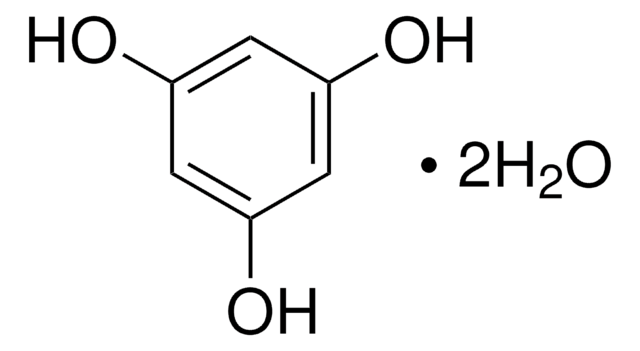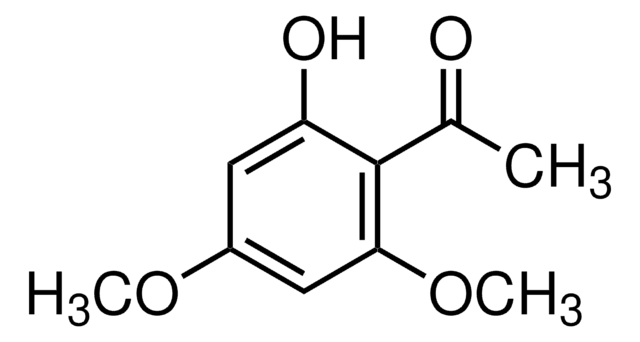132632
3,5-Dimethoxyphenol
99%
Synonym(s):
Phloroglucinol dimethyl ether
Sign Into View Organizational & Contract Pricing
All Photos(1)
About This Item
Linear Formula:
(CH3O)2C6H3OH
CAS Number:
Molecular Weight:
154.16
Beilstein/REAXYS Number:
1239156
EC Number:
MDL number:
UNSPSC Code:
12352100
PubChem Substance ID:
NACRES:
NA.22
Recommended Products
Quality Level
assay
99%
form
solid
bp
172-175 °C/17 mmHg (lit.)
mp
40-43 °C (lit.)
SMILES string
COc1cc(O)cc(OC)c1
InChI
1S/C8H10O3/c1-10-7-3-6(9)4-8(5-7)11-2/h3-5,9H,1-2H3
InChI key
XQDNFAMOIPNVES-UHFFFAOYSA-N
Looking for similar products? Visit Product Comparison Guide
Related Categories
Application
3,5-Dimethoxyphenol has been used in a study on iron porphyrin phenoxides. It was used to develop a new analytical method using LC-MS that enables the simultaneous identification and quantification of new alkaloids and the alkaloidal diterpenoids.
signalword
Warning
hcodes
Hazard Classifications
Eye Irrit. 2 - Skin Irrit. 2 - STOT SE 3
target_organs
Respiratory system
Storage Class
11 - Combustible Solids
wgk_germany
WGK 3
ppe
dust mask type N95 (US), Eyeshields, Gloves
Choose from one of the most recent versions:
Already Own This Product?
Find documentation for the products that you have recently purchased in the Document Library.
Customers Also Viewed
Iron porphyrin phenoxides: models for some hemoglobin mutants.
Ainscough E_W, et al.
Journal of the American Chemical Society, 100(24), 7585-7591 (1978)
J Stríbrný et al.
Soudni lekarstvi, 55(3), 36-39 (2010-10-15)
Autopsy findings of fatal intoxication with yew (Taxus baccata) are nonspecific. A presence of plant residues in the digestive tract can signalize yew intoxication. If yew decoction is consumed, plant residues are not found. In such a case the intoxication
Márcia Pessêgo et al.
Journal of pharmacy & bioallied sciences, 3(1), 128-134 (2011-03-25)
Nitrosative deamination of DNA bases induced by reaction with reactive nitrogen species (RNS) has been pointed out as a probable cause of mutagenesis. (Poly)phenols, present in many food items from the Mediterranean diet, are believed to possess antinitrosating properties due
Claudia Panzeri et al.
Clinical toxicology (Philadelphia, Pa.), 48(5), 463-465 (2010-06-10)
Yew (Taxus baccata) is a conifer known to be toxic since ancient times. Taxine A and taxine B, the toxic alkaloids of Taxus, block cardiac sodium and calcium channels causing nausea, vomiting, abdominal pain, cardiac arrhythmias, respiratory distress, coma, seizures
F Musshoff et al.
International journal of legal medicine, 106(1), 45-50 (1993-01-01)
In a case of suicide in a depressive 19-year-old man with considerable ingestion of new leaves, resorption of yew ingredients could be demonstrated. The main substance could be identified as 3,5-dimethoxyphenol, the aglycone of taxicatine, which is a typical ingredient
Our team of scientists has experience in all areas of research including Life Science, Material Science, Chemical Synthesis, Chromatography, Analytical and many others.
Contact Technical Service
